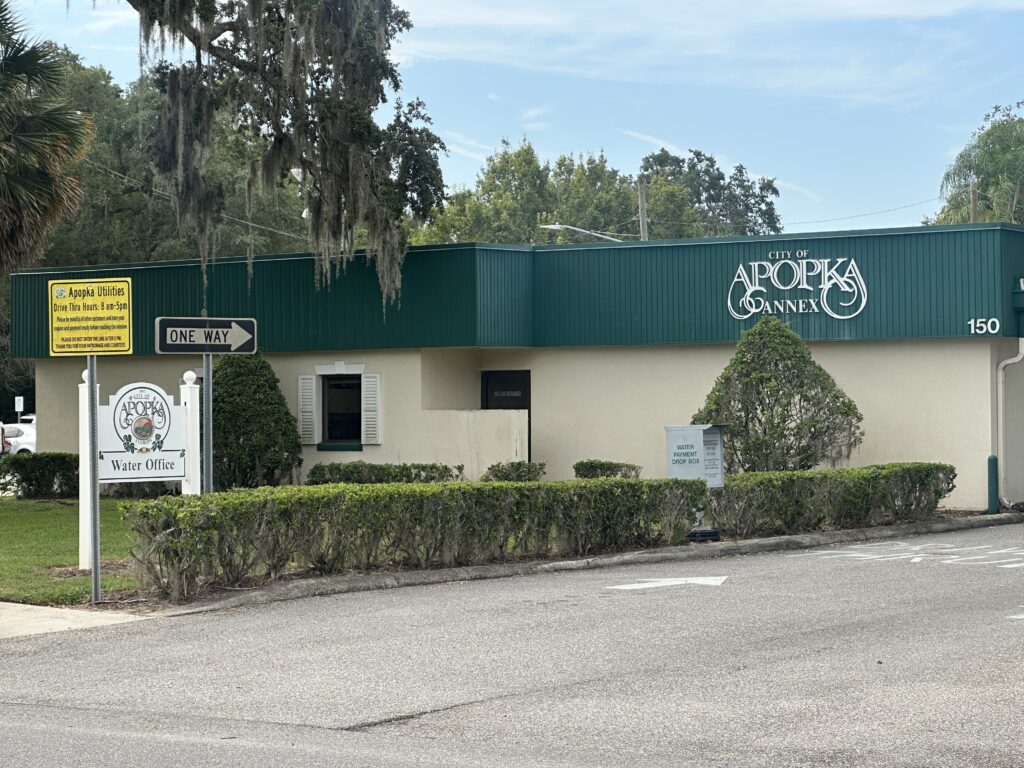
Teresa Sargeant
Key Points
The Apopka City Council voted unanimously at its Aug. 6 meeting to accept the recommended impact fee increases, which would range from 35% to 113% for residential fees and 64% to 452% for non-residential fees.
The city’s police, fire, and park and recreation fees have not been raised since they were first implemented in 2016.
Impact fees ensure new developments help pay for infrastructure costs, fund for the expansion of public safety amenities, recreation areas and other city infrastructure, and relieve the strain on current residents to pay for growth-related expenditures.
The city hired Raftelis, a government consulting firm, to conduct the city’s impact fee study, which recommended the increases.
“In the case of this analysis, police, fire and parks and recreation related services, these fees are used to pay for growth related capital, facilities and major equipment for those various departments,” Shawn Ocasio, senior manager for Raftelis, said at the Aug. 6 City Council meeting. “These fees are important to have in your community, and have them appropriately sized and updated accordingly, because to the extent you have these in place and at an appropriate level, it helps mitigate the costs that are related to growth being borne by existing residents.”
Henry Thomas, vice president of Raftelis, presented the same impact fee study at the July 17 workshop for the utility rate increase study and impact fees. At that time, the City Council decided to further explore impact fees at the Aug. 6 meeting, specifically historical data on when impact fees were last increased and possible implementation strategies.
At both meetings, Raftelis recommended that police impact fees increase from $747 to the calculated full fee of $1,262 per single-family dwelling unit; fire impact fees, from $708 to the full fee of $1,511 per single-family dwelling unit; and parks and recreation impact fees, from $1,060 to the full fee of $1,358 for single-family units.
In 2016, Raftelis – at that time known as PRMG – conducted the study that created the impact fees currently in place for city police and fire. Before that time, the city didn’t charge these impact fees.
Before the 2016 study, the parks and recreations fees were $241.05, and they increased to the $1,060 amount in that 2016 study. The $1,060 amount is in place now, so there is no history of change in the rates.
The city must consider the legal matter of increasing its impact fees, specifically the Florida Impact Fee Act, which the Florida Legislature created in 2006 and has amended multiple times, most recently this year.
Among the requirements of the Florida Impact Fee Act are the use of localized data within the past four years and the 90-day waiting period before fees can be collected.
Among the new limitations, impact fee increases may not exceed 50% of the current impact fee rate unless considered an “extraordinary circumstance,” which includes a demonstrative study showing a justification for the increase beyond the phase-in limitations and an ordinance approval by a two-third vote. An increase also may not be done more than once every four years, according to Ocasio.
At the July 17 utility rates study workshop, Thomas said his company recommended that the city increases its utility rates for the upcoming fiscal year. These increases include a 15.5% increase for water and wastewater, 15% for sanitation, and 20% for stormwater. The city’s finance director, Blanche Sherman, sent out notices to residents about the proposed changes on Aug. 1.
The rate increases would help pay for infrastructure projects, replace aging equipment, build up cash reserves, and meet the growing needs of the city.
Thomas also proposed multi-year rate adjustments for water, wastewater, and sanitation beyond fiscal year 2026.

